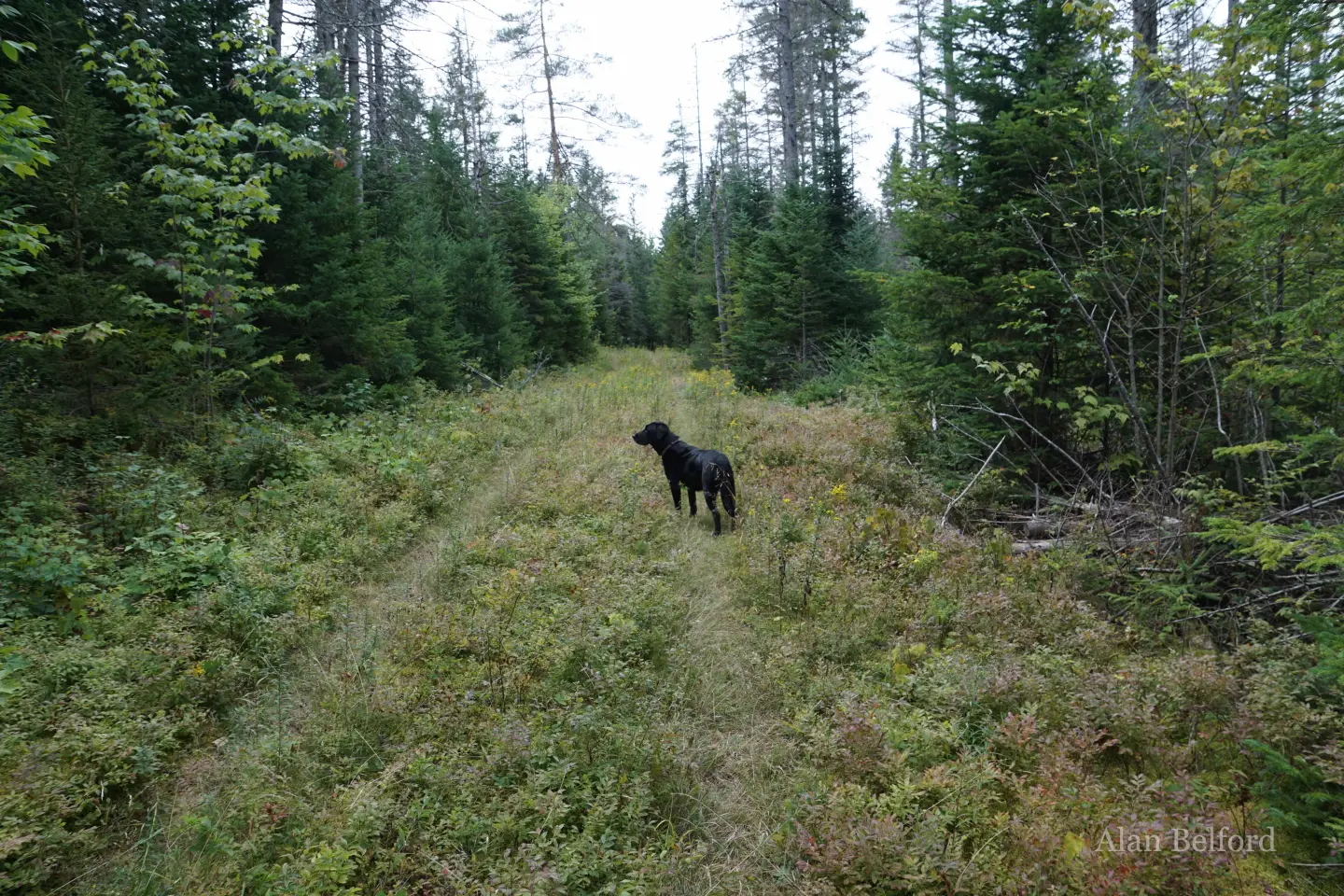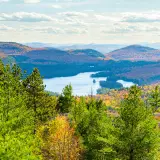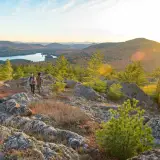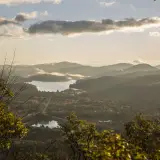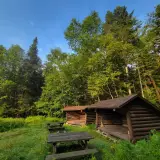Finding a place to sleep
It was already dark when I pulled into our campsite with my dog, Wren, ready to pitch up our tent and prepare for a night in the cooling, early fall woods. For some people, the camping season ends with the end of summer, but I love fall camping, and soon had the tent set up and had started the task of fixing dinner.
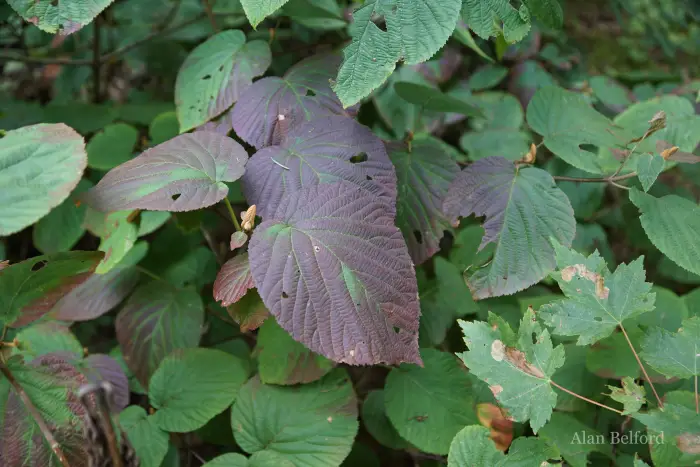
Relaxing in camp
Well, fixing dinner is a bit of a stretch. I had cheated and stopped for a sandwich (I’d call it a hoagie, but you can call it a sub if you want). Either way, it was tasty and I prepared Wren’s dinner which included a share of the sandwich as well. She gratefully accepted the donation of turkey.
Our bellies full, I cleaned up and readied for bed. We had already taken the requisite evening swim before we had found our campsite. I camp quite a bit, but I’m not one for sitting up late by the campfire, even though I enjoy that sort of thing when it happens. My early schedule dictates that I get to bed, but I tend to lie in the tent jotting field notes from the day and looking over my maps for the next day’s adventures.
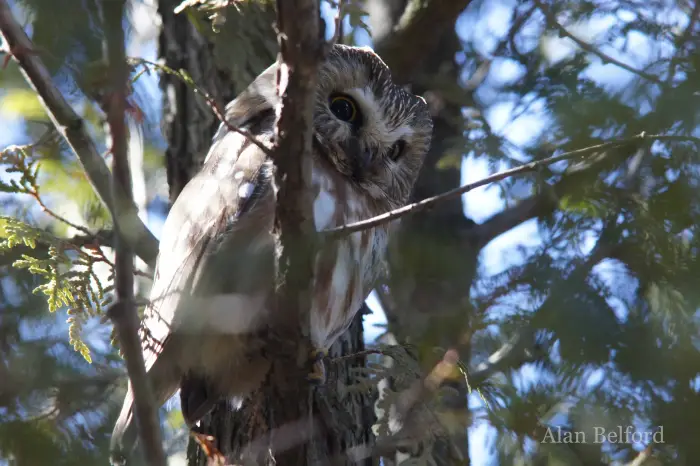
That night was no different, and I struggled to keep my eyelids open as I planned our course for the next day. Despite my fatigue, my ears seemed to be alert for the nocturnal movements of wildlife and here and there I heard the scamper of mice – in search of food.
I also heard sounds from above as migrant birds – including a couple Veeries and a Swainson’s Thrush -chipped and pipped at times overhead. Then just as my head drooped again and I was going to give up and go to sleep, I heard the squeal of a Northern Saw-whet Owl off in the woods. With that I turned off my light and went to sleep.
Starting the Day with a Pair of Hikes
The following morning dawned gray and damp as the cool air condensed the mist on everything around us. I groggily stuck my head out of the tent and looked around at the growing light on the world. Wren wanted to get out of the tent so she could explore the night’s happenings with her nose.
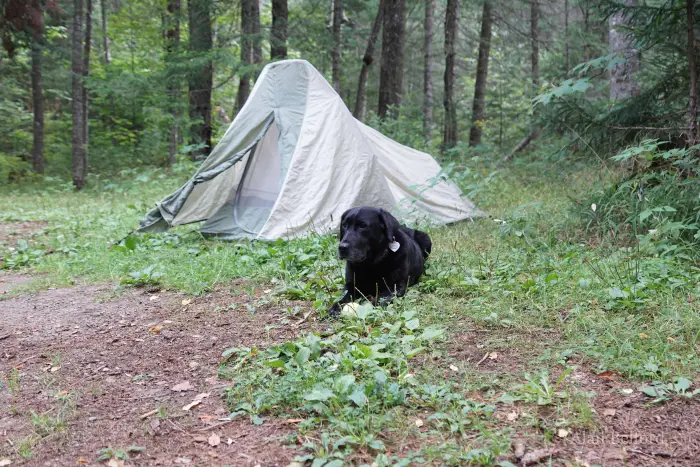
Once up, I packed up my sleeping bag and other items in the tent, leaving the tent standing in the hope that it would dry a little while we ate breakfast and went for a hike. While we were eating I once again had my ears tuned in to see what I could hear from the surrounding forest, and I began the day with the likes of Hairy Woodpecker, Black-backed Woodpecker, Pileated Woodpecker, Purple Finches, Golden-crowned Kinglets, and both Red and White-breasted Nuthatches.
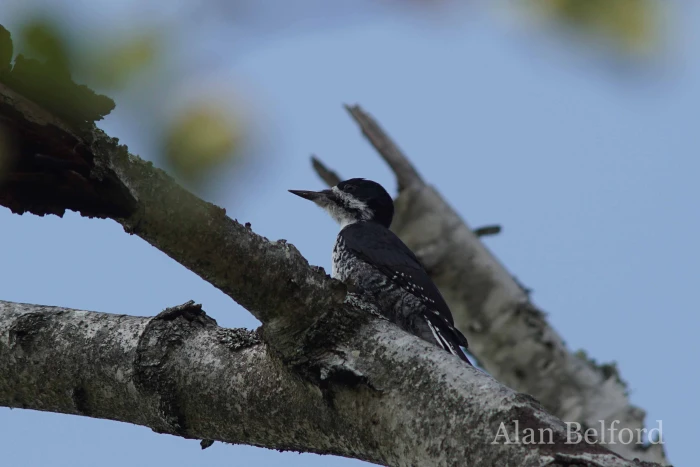
Our breakfast completed, we took a hike along the road which leads to the trailhead for Vanderwhacker Mountain, an excellent hike – topped off by a fire tower — for anyone in the mood. We also poked around some of the coniferous and boreal habitat along the railroad bed which bisects the road – a good area to look for species like Boreal Chickadee, although we didn't find one there on that day.
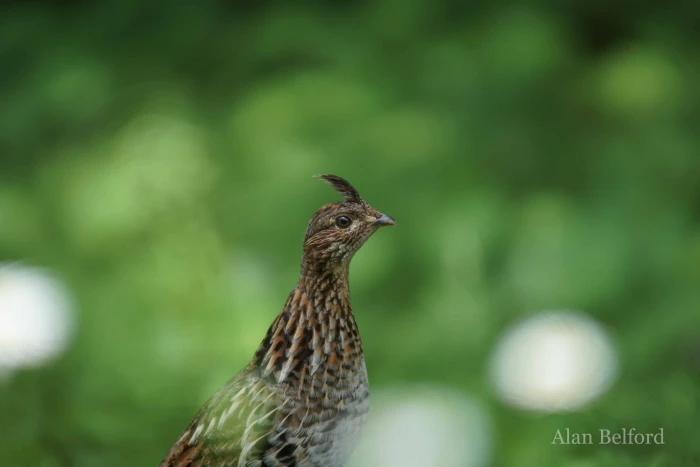
We eventually made our way back to camp and I finished packing the still-damp tent while Wren continued exploring with her nose. Our packing complete, we loaded up and headed down the road to the Roosevelt Truck Trail for our second hike of the day. The trail is easy and relatively flat, a wide grassy path (a bit overgrown at times at this point in the year, but easy to traverse) that was marked by lots of late summer and early fall wildflowers. And so while I kept my eyes and ears open for birds as I always do, I spent far more time botanizing than I did birding.
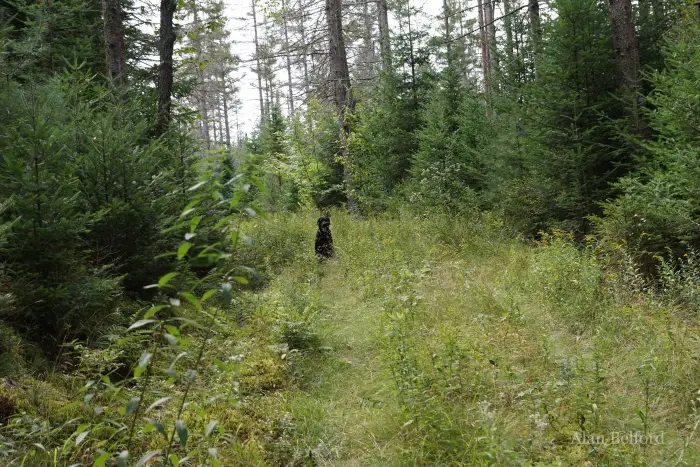
As a result, while the hike featured a second Black-backed Woodpecker and a few Ruffed Grouse, our route along it was strung together by a list of wildflowers more than anything else. It began with a gradual rise before dropping into what is largely a coniferous forest, gently rising and falling now and then, and I found myself stooped or kneeling in the soft ground or moss as I keyed out wildflowers and enjoyed the blooms of species like closed gentian, pearly everlasting, rough-stemmed goldenrod, Canada goldenrod, blue-stemmed goldenrod, late goldenrod, lance-leaved goldenrod (are you sensing a trend?), and New York aster.
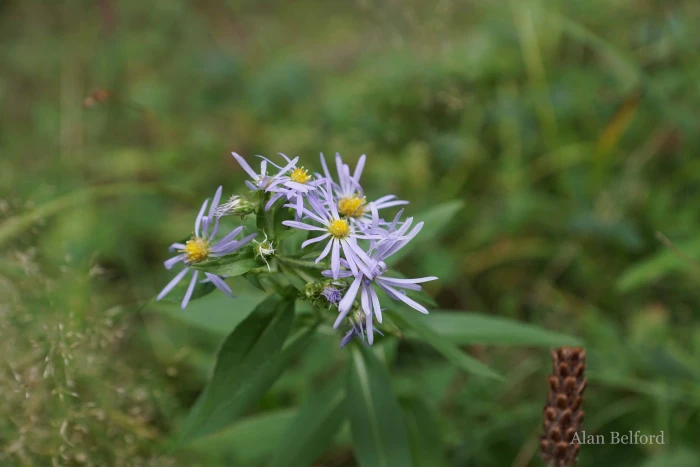
We eventually wound our way along the easy path to a few campsites which mark the middle of the trail and I paused to have a snack while Wren nosed her way around the sites. The campsites allow folks to take a relatively easy backpacking trip, and we used it as our place to turn around and follow the trail back out toward the trailhead. On our way we chatted with a couple of birders from outside the area about both birds and botany, and they later texted me to tell me that they found both a Black-backed Woodpecker as well as a few Boreal Chickadees – a bird I missed on our hike, but one which is regularly found there.
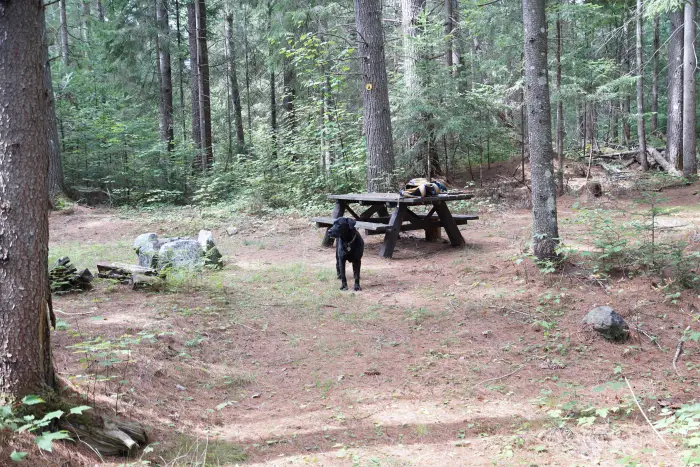
I continued botanizing my way back to the trailhead, timing it well for a picnic lunch at the car before we headed down the road for more adventures.
Fall is a great time of year for hiking, camping, and other outdoor adventures. Visit our lodging and dining pages to help you plan your trip.
